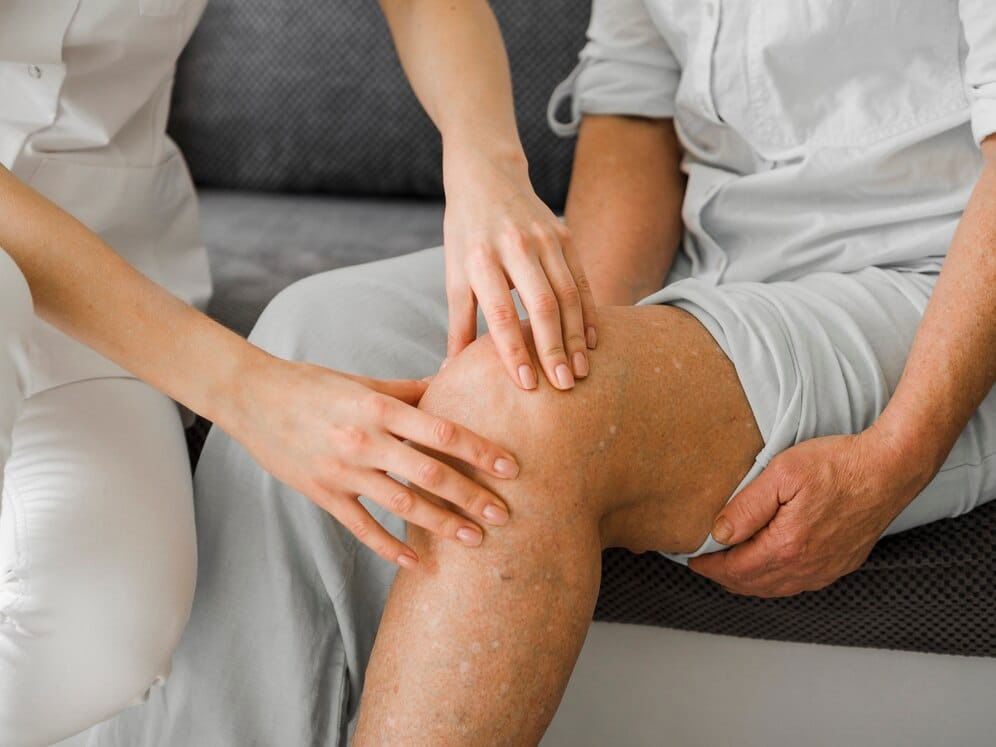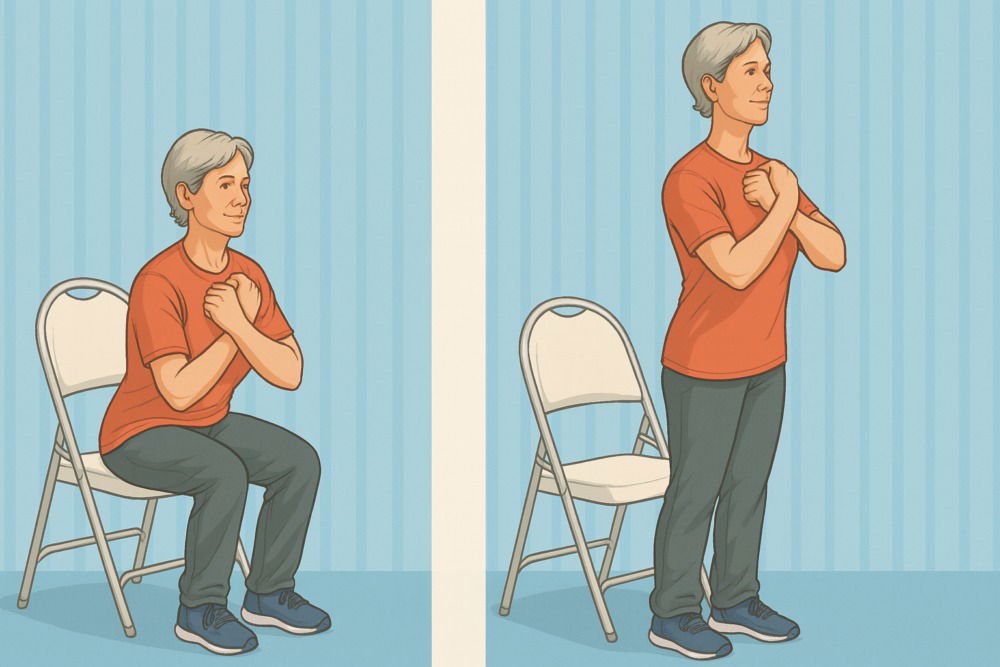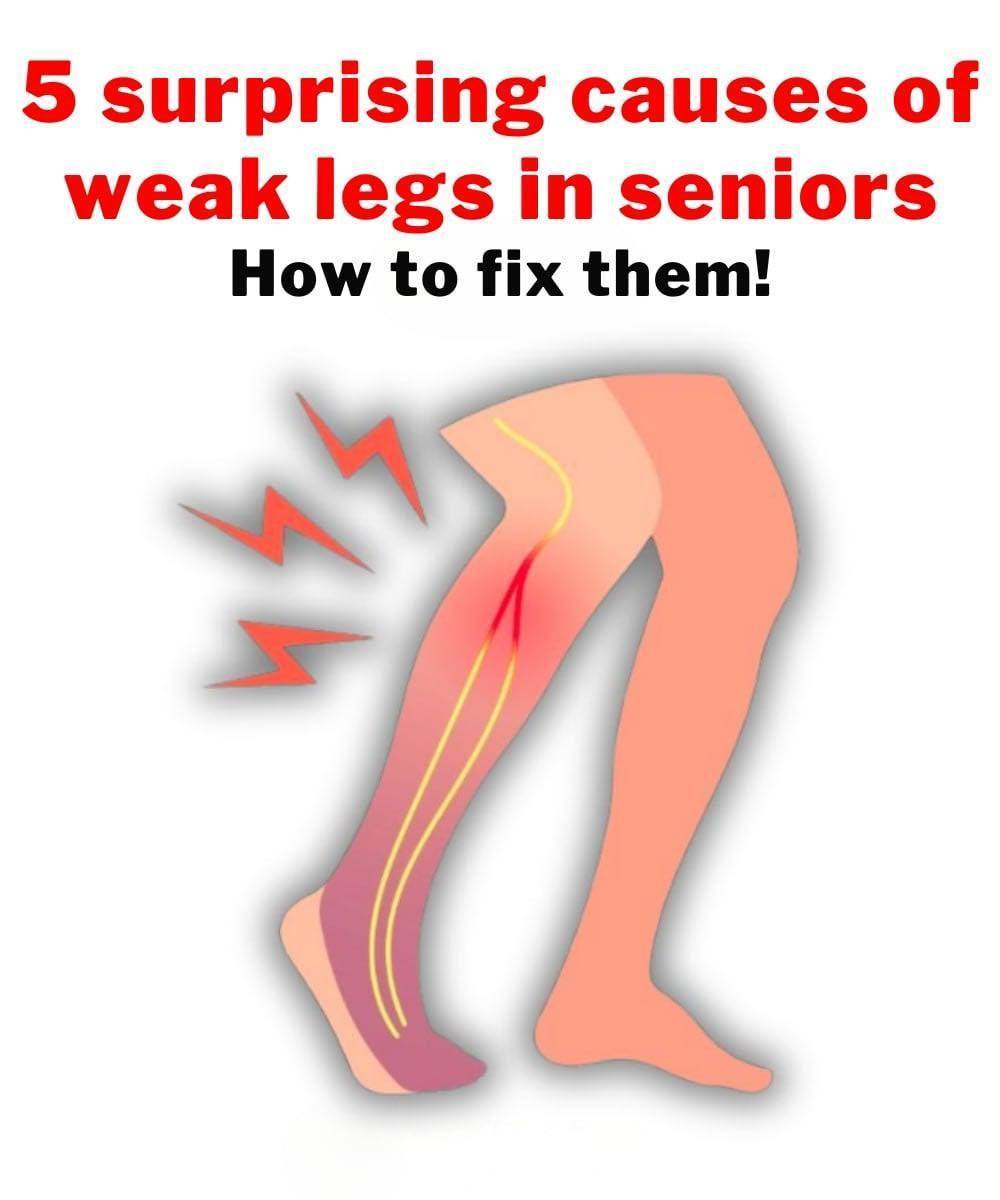Some long-term health problems also affect leg strength. For example, arthritis, diabetes, and peripheral neuropathy can reduce balance and stability, making movement harder.
If you develop nerve damage from diabetes, it can make you fearful of falling, causing you to stay still, which only worsens the weakness.
Working closely with your doctor to manage these conditions, along with physical therapy and exercise, can help prevent further decline.
4. Back Problems
Lower back conditions, like spinal stenosis, herniated discs, or sciatica, can affect nerves that run to your legs, causing weakness or pain.
These issues often make you reluctant to move, but staying as active as possible is still key. Gentle exercises, guided by a physical therapist, can help manage pain and protect leg strength.
If you experience serious numbness, tingling, or weakness, see a doctor for specialized advice.

5. Lack of Motivation
Mental and emotional changes can also lead to weak legs. Retirement, depression, or the loss of a loved one can leave you without motivation to stay active.
If your routine changes after leaving work, you might stop moving as much, leading to weakness. It’s important to reach out for help and build a support system.
Exercising with a friend, joining a senior fitness group, or leaning on family can give you both encouragement and a sense of community to keep moving.
Key Reminders
Although leg weakness is common with age, it is often reversible. Staying active is your strongest defense against muscle loss and related issues.
Addressing any chronic health problems and looking after your back health also matters. Lastly, having emotional support and motivation makes a big difference.
Simple Home Exercises

- Chair Stands: Practice rising from a chair and sitting back down slowly to build practical leg strength. If it’s difficult, use a higher chair or place a cushion on the seat, and work up to doing it without using your hands.
- Lunges: These work each leg individually and challenge your balance. Take a forward step, lower your back knee gently, and push off to stand up again. Hold onto a surface if needed.
- Walking: Walking is simple yet powerful. Start on level ground, using a cane or walker if you need stability. Build up gradually and try small hills or trails when confident.
Always remember: any movement is better than none, and consistency is the secret to keeping your legs strong and preserving your independence as you age. If you’re unsure where to begin, don’t hesitate to ask a doctor, physical therapist, or a supportive friend for help. Your future self will be glad you did!

